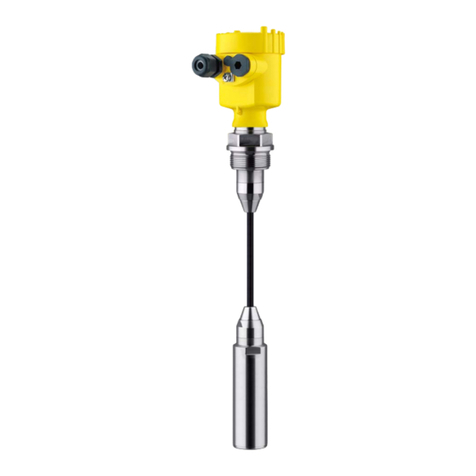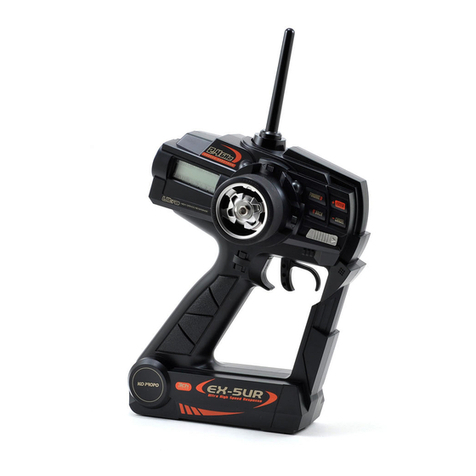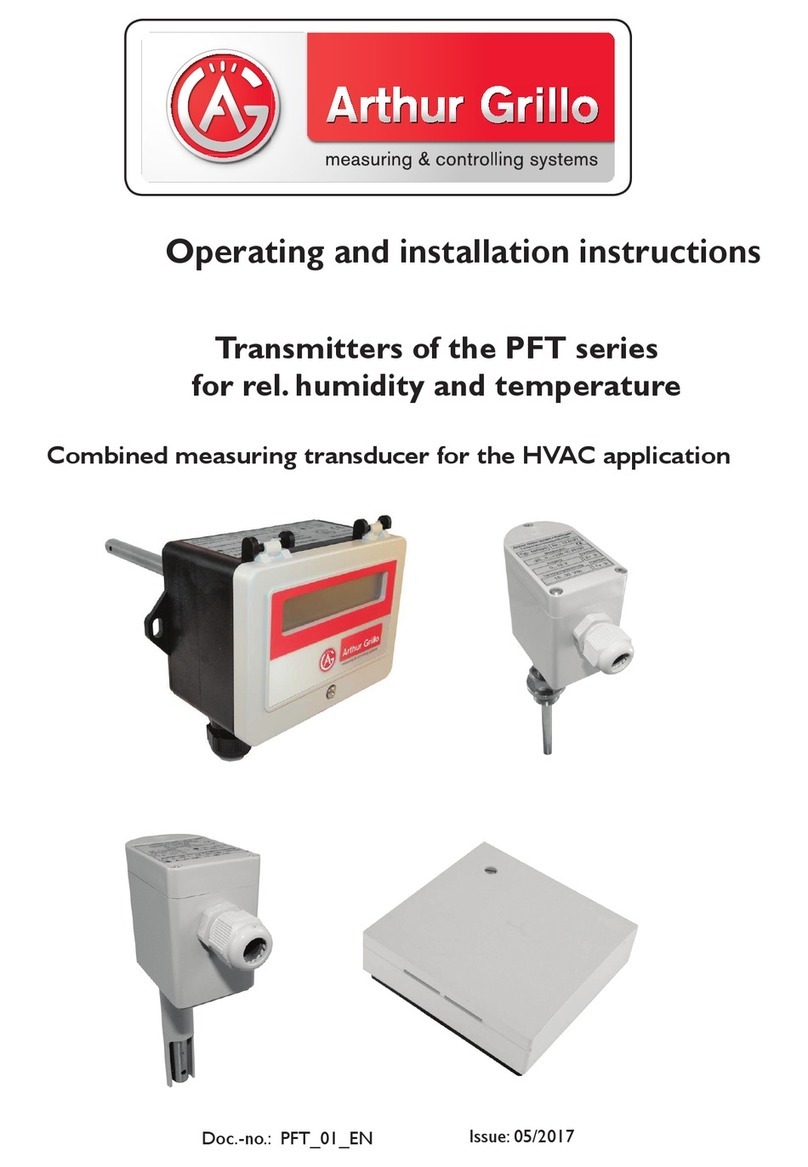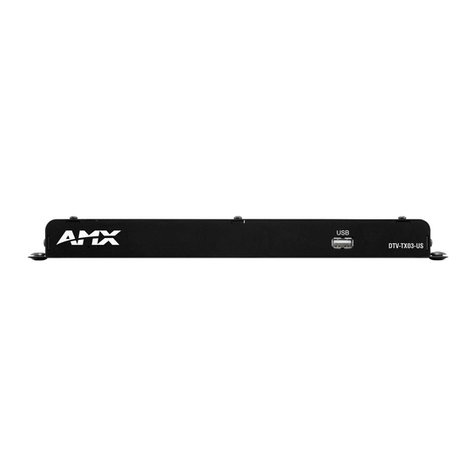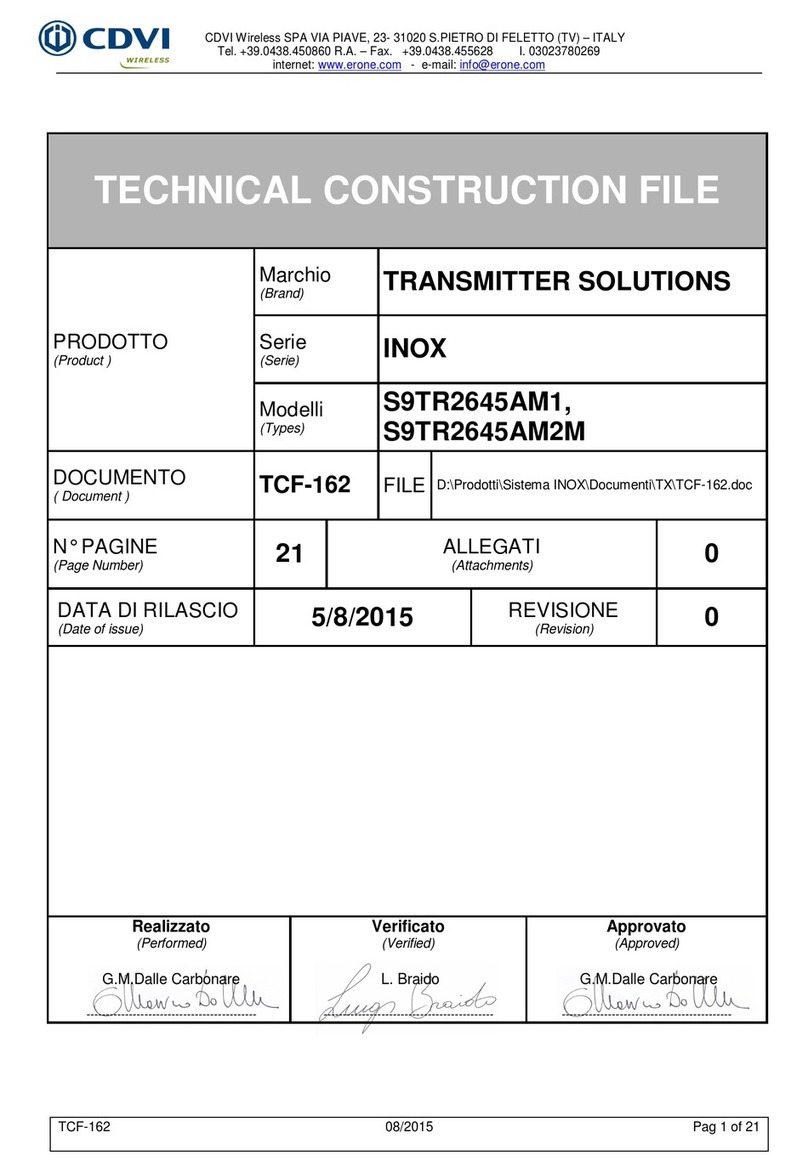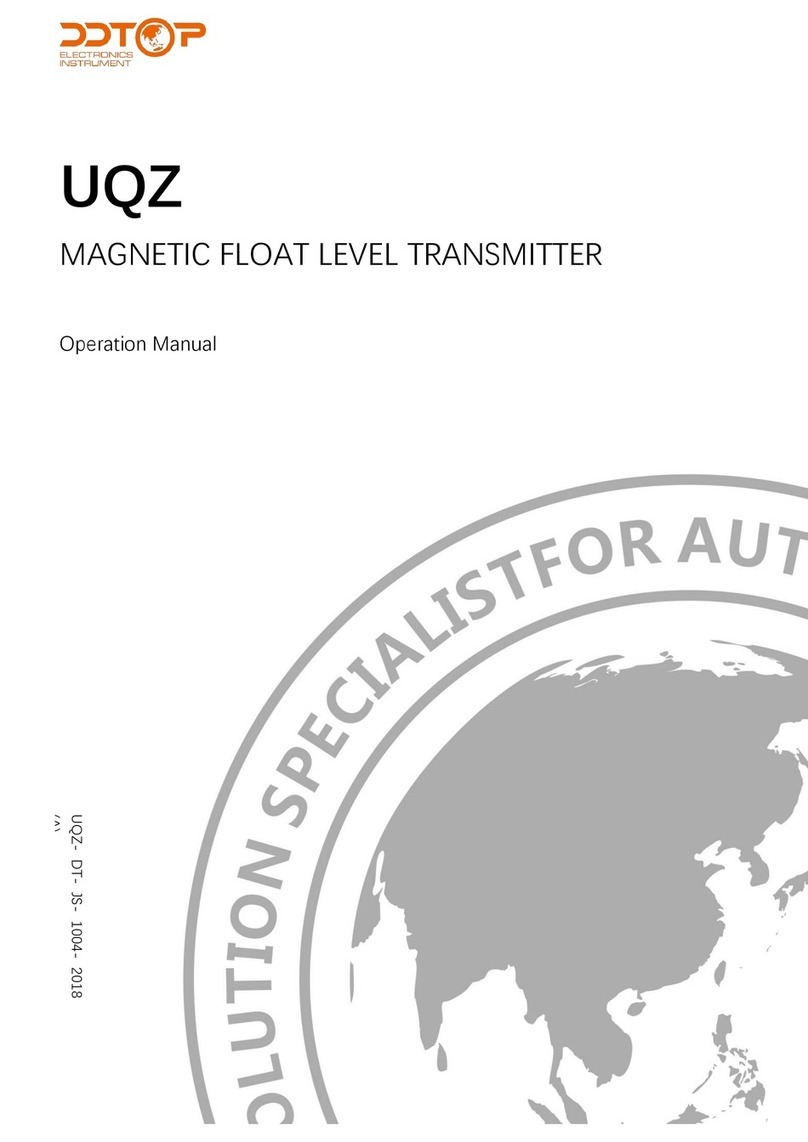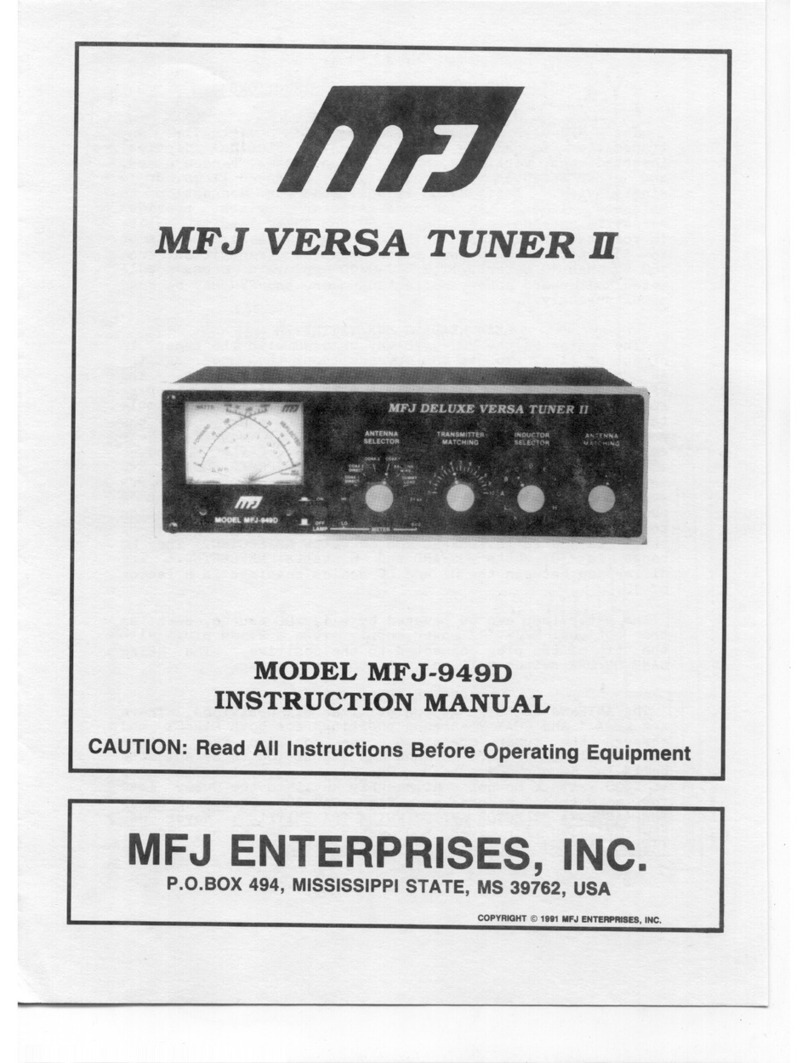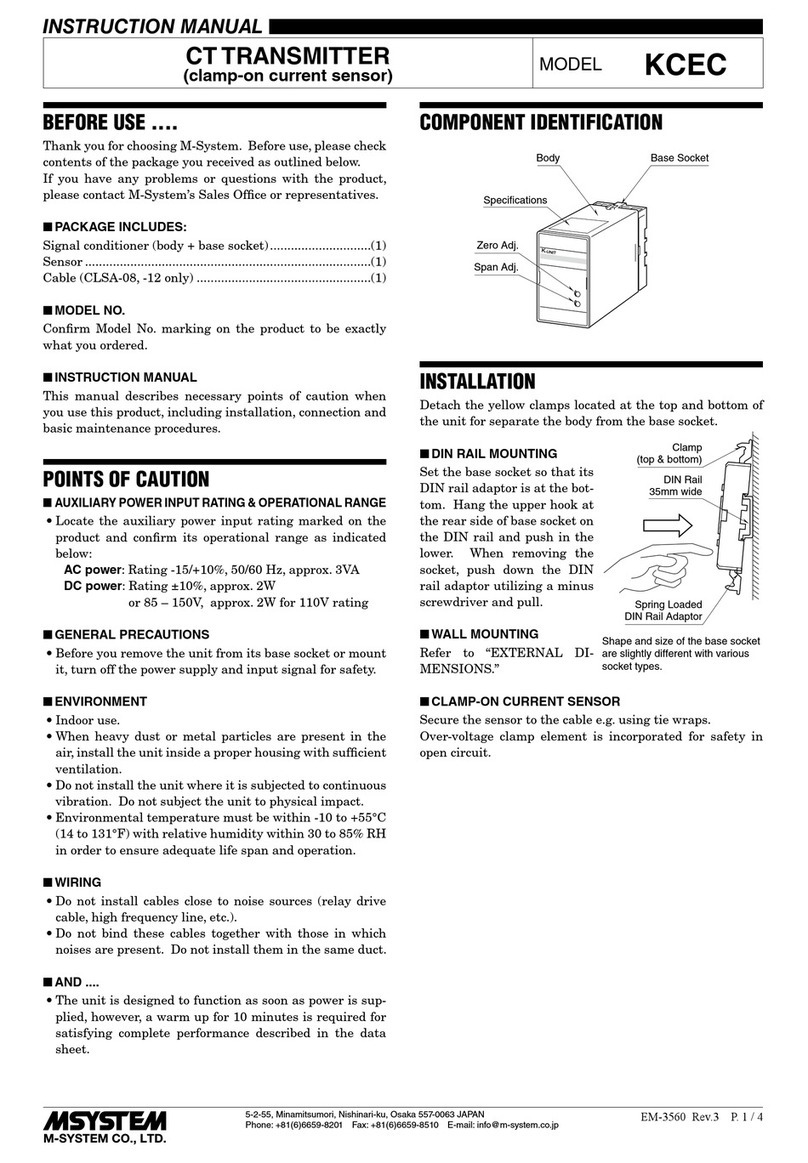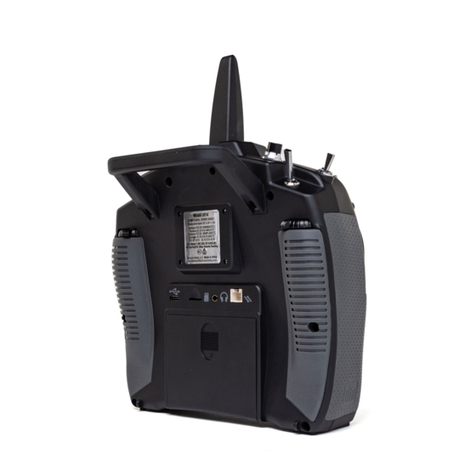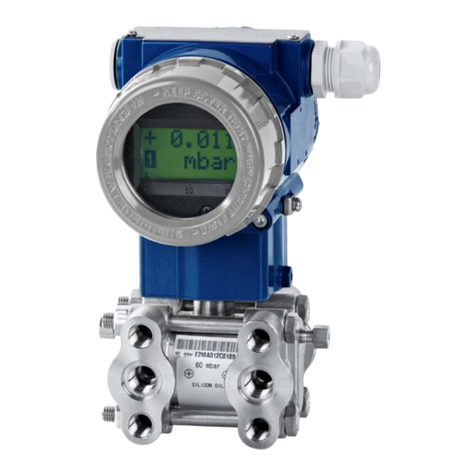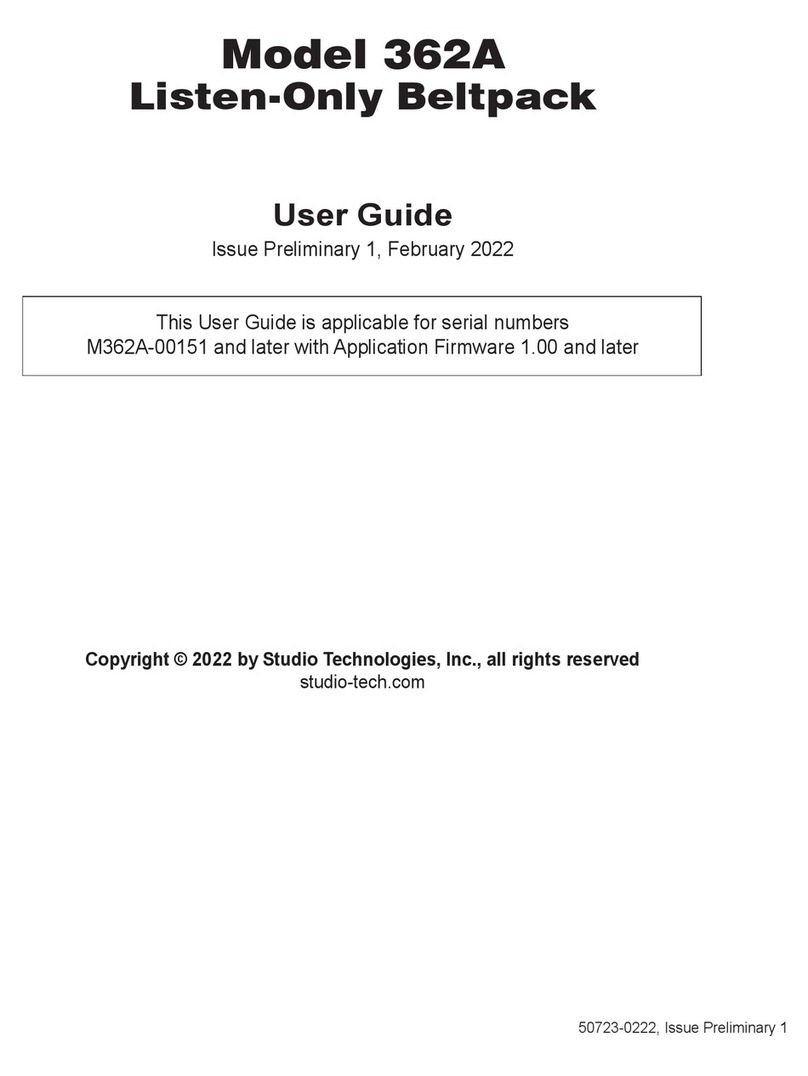Linear Technology LTC 4125 User manual

LTC4125
1
4125f
For more information www.linear.com/LTC4125
Typical applicaTion
FeaTures DescripTion
5W AutoResonant Wireless
Power Transmitter
TheLT C
®
4125is a simple and highperformance monolithic
full bridge resonant driver capable of delivering over 5W of
power wirelessly to a properly tuned receiver.The device
controls the current flow in a seriesconnected transmitcoil
LC network to create a simple,safe and versatile wireless
power transmitter.
The LTC4125 automatically adjusts its driving frequency
to match the LC network resonant frequency.This
AutoResonant switching allows the device to deliver
maximum power from a low voltage input supply (3V to
5.5V) to a tuned receiver.To optimize system efficiency,
the LTC4125 employs a periodic transmit power search
and adjusts the transmission power based on the receiver
load requirements.The device stops delivering power
during a fault condition,or if a foreign object is detected.
The LTC4125 also includes a programmable maximum
average input current limit and an NTC input as additional
means for foreign object and overload protection.The
LTC4125 is available in a 20-lead low profile (0.75mm)
4mm × 5mm QFN package.
applicaTions
n Monolithic 5W Wireless Power Transmitter
n AutoResonant
TM
Switching Frequency Adjusts to Res-
onant Capacitance and Transmit Coil Inductance*
n Transmit Power Automatically Adjusts to Receiver
Load*
n Input Voltage Range: 3V to 5.5V
n Integrated 100mΩ Full Bridge Switches
n Multiple Foreign Object Detection Methods
n Programmable Average Input Current Limit and
Monitor
n NTC Input for System/Component Temperature
Qualified Power Transfer
n Wide Operating Switching Frequency Range:
50kHz to 250kHz
n Thermally Enhanced 4mm ×5mm QFN 20-Lead Package
n Hermetically and/or Electrically Insulated Devices
n Military Sensors and Devices
n Medical Equipment
n Industrial Handhelds L,LT ,LT C ,LT M , Linear Technology and the Linear logo are registered trademarks and
AutoResonant is a trademark of Linear Technology Corporation. All other trademarks are the
property of their respective owners. Protected by U.S. Patents, including 9041254.
*The AutoResonant and Auto Load Detect features use patent pending circuits and algorithms.
CTX
100nF
+
–
STAT
IS–
IS+
EN
FTH
PTHM
NTC
SW1
SW2
FB
59.0k
100k
2.21k
470pF10nF
10nF
1µF
11.3k
20mΩ
4.7nF
100µF
10k
100k
R
L
VIN
348k
5.23k
LTX
24µH
LTX
COIL
LRX
COIL
VIN
VIN
VIN
3V TO 5.5V
10k
TRANSMITTER
CIRCUIT
RECEIVER
CIRCUIT
CFB1
0.1µF
4125 TA01
AIR GAP
IMON CTD CTS GND
IN IN1 IN2
LTC4125
5W Wireless Transmitter

LTC4125
2
4125f
For more information www.linear.com/LTC4125
pin conFiguraTionabsoluTe MaxiMuM raTings
IN,IS–,CTD............................................. –0.3V to 6V
IN1, IN2,IS+................................. –0.3V to VIN + 0.3V
DTH,FTH,PTHM,FB ................... –0.3V to VIN + 0.3V
NTC, EN,PTH1,PTH2,CTS.......... –0.3V to VIN + 0.3V
IMON ................ –0.3V to MIN(VIN, VIS+, VIS–) + 0.3V
STAT ........................................... –0.3V to VIN + 0.3V
STAT ......................................................–1mA to 2mA
Operating Junction Temperature Range
(Note 2)............................................. –40°C to 125°C
Storage Temperature Range .................. –65°C to 150°C
(Note 1)
20 19 18 17
7 8
TOP VIEW
21
GND
UFD20 PACKAGE
20-LEAD (4mm ×5mm) PLASTIC QFN
9 10
6
5
4
3
2
1
11
12
13
14
15
16
IN
CTS
IS–
IS+
IMON
NTC
GND
EN
CTD
FB
PTHM
PTH1
IN1
SW1
SW2
IN2
DTH
STAT
FTH
PTH2
TJMAX=125°C, θJA=43°C/W
EXPOSED PAD (PIN 21) MUST BE CONNECTED TO GND
orDer inForMaTion
LEAD FREE FINISH TAPE AND REEL PART MARKING PACKAGE DESCRIPTION TEMPERATURE RANGE
LTC4125EUFD#PBF LTC4125EUFD#TRPBF 4125 20-Lead (4mm × 5mm) Plastic QFN –40°C to 125°C
LTC4125IUFD#PBF LTC4125IUFD#TRPBF 4125 20-Lead (4mm × 5mm) Plastic QFN –40°C to 125°C
Consult LTC Marketing for parts specified with wider operating temperature ranges.
For more information on lead free part marking, go to: http://www.linear.com/leadfree/
For more information on tape and reel specifications, go to: http://www.linear.com/tapeandreel/. Some packages are available in 500 unit reels through
designated sales channels with #TRMPBF suffix.

LTC4125
3
4125f
For more information www.linear.com/LTC4125
elecTrical characTerisTics
SYMBOL PARAMETER CONDITIONS MIN TYP MAX UNITS
Input Supply Operating Range VIN=VIN1=VIN2 l3 5.5 V
Input Supply Quiescent Current
At IN pin
At IN1, IN2 pin
SW1 and SW2 Open
EN = 5V
1
50
2
150
mA
μA
Enable Pin
EN Leakage Current VEN=5V l0.2 0.5 1.2 μA
EN Falling Threshold VEN Falling 1.20 V
EN Hysteresis 16 mV
Search Delay Oscillator Pins
ICTS,PU CTS Pull-Up Current VCTS=0V –10 µA
ICTS,PD CTS Pull-Down Current VCTS=2V 10 µA
CTS Pin Frequency CCTS=4.7nF 1.0 1.7 2.4 kHz
CTS Threshold for AutoResonant Disable l1.8 2.3 2.8 V
ICTD,PU CTD Pull-Up Current VCTD=0V –10 µA
ICTD,PD CTD Pull-Down Current VCTD=2V 10 µA
CTD Pin Frequency CCTD=470pF 10 17 24 kHz
Resonant Driver and Pulse Width Modulator
Operating Frequency Range 50 250 kHz
RA,B,C,D Switch On Resistances MOSFETs A, B, C and D (Block Diagram) 150 mΩ
Switch Pins Minimum On Time SW1, SW2 150 ns
Minimum PTH Voltage for Switching 35 mV
PTH Voltage to Pulse Width Gain normalized to
the LC natural frequency (fn)
SW1 On Time •fn/ ∆VPTH1,
SW2 On Time •fn/ ∆VPTH2
0.24 V–1
PTH Pull Up Current when Overdriving VPTH1=VPTH2=0V l–20 –10 –5 μA
PTH Pull Down Current when Overdriving VPTH1=VPTH2=5V l10 20 40 μA
Auto Load Detection
VPTH Step Size during Auto Load Detection
Search
75 mV
Delay Time between Optimum Point Search CCTD=470pF 3.7 s
Optimum Point Search Duration CCTS=470pF (Figure 13) 40 ms
FB Pin Leakage Current VFB=5V l0.2 0.5 1.2 μA
FB Over-Range Rising Threshold VFB Rising lVIN – 0.04 VIN VIN + 0.04 V
FB Over-Range Threshold Hysteresis 40 mV
PTHM Pin Leakage Current VPTHM=5V l0.2 0.5 1.2 μA
PTHM Pin Common Mode Voltage Range 0 5 V
FTH Pin Leakage Current VFTH=0V l–1.2 –0.5 –0.2 μA
FTH Voltage to Frequency Gain 64 kHz/V
DTH Pin Leakage Current VDTH=0V l–1.2 –0.5 –0.2 μA
The ldenotes the specifications which apply over the specified operating
junction temperature range, otherwise specifications are at TA=25°C. VIN =VIN1=VIN2=5V unless otherwise noted (Notes 2, 3).

LTC4125
4
4125f
For more information www.linear.com/LTC4125
elecTrical characTerisTics
SYMBOL PARAMETER CONDITIONS MIN TYP MAX UNITS
Input Current Limit and Monitoring
VIS+,IS– Sense Voltage Offset
l
–500
–1.5
500
1.5
µV
mV
IS+Pin Current VIS+=5V, VIS+,IS–=–50mV –100 100 nA
IS–Pin Current VIS–=VIS+=5V 15 μA
IMON Pin Leakage Current VIS+,IS–=–50mV, VIMON=0V – 5V –100 100 nA
VITH Input Current Comparator Threshold at IMON
during Search
VIMON Rising l0.785 0.800 0.815 V
VILIM Input Current Limit Comparator Threshold at
IMON during Delay Time
VIMON Rising l1.175 1.200 1.225 V
Input Current Limit Comparator Hysteresis 40 mV
Thermistor Input
NTC Hot Threshold VNTC Falling, % of VIN l33 35 37 % VIN
NTC Thresholds Hysteresis % of VIN 5 % VIN
NTC Open Circuit Voltage % of VIN l48 50 52 % VIN
NTC Open Circuit Input Resistance 300 kΩ
Open Drain Status Pin
STAT Pin Leakage Current VSTAT=5V –1 1 μA
STAT Pin Output Voltage Low ISTAT=1mA l0.4 V
The ldenotes the specifications which apply over the specified operating
junction temperature range, otherwise specifications are at TA=25°C. VIN =VIN1=VIN2=5V unless otherwise noted (Notes 2, 3).
Note 1: Stresses beyond those listed under Absolute Maximum Ratings
may cause permanent damage to the device. Exposure to any Absolute
Maximum Rating condition for extended periods may affect device
reliability and lifetime.
Note 2: The LTC4125 is tested under conditions such that TJ≈ TA. The
LTC4125E is guaranteed to meet specifications from 0°C to 85°C junction
temperature. Specifications over the -40°C to 125°C operating junction
temperature are assured by design, characterization and correlation
with statistical process controls. The LTC4125I is guaranteed over the
full -40°C to 125°C operating junction temperature range. The junction
temperature (TJ, in °C) is calculated from the ambient temperature (TA,
in °C) and power dissipation (PD, in Watts) according to the following
formula:
TJ=TA+ (PD•θJA), where θJA (in °C/W) is the package thermal
impedance.
Note that the maximum ambient temperature consistent with these
specifications is determined by specific operating conditions in
conjunction with board layout, the rated package thermal impedance and
other environmental factors. This IC includes over temperature protection
that is intended to protect the device during momentary SW MOSFETs
over current situation. Junction temperature will exceed 125°C when over
temperature protection is active. Continuous operation above the specified
maximum operating junction temperature may impair device reliability.
Note 3: All currents into pins are positive; all voltages are referenced to
GND unless otherwise noted.
Note 4: This IC includes overtemperature protection that is intended
to protect the device. Junction temperature will exceed 125°C when
overtemperature protection is active. Continuous operation above the
specified maximum operating junction temperature will reduce lifetime.

LTC4125
5
4125f
For more information www.linear.com/LTC4125
Typical perForMance characTerisTics
Supply Quiescent Current at IN,
IN1 and IN2 Over Temperature
EN Threshold
Over Temperature
CTS, CTD Pin Frequency and
Search Delay Time Over
Temperature
Switch Resistances Over
Temperature
VIS+,IS– Sense Amplifier Offset
Over Temperature
Input Current Threshold and Limit
Over Temperature
TA=25°C, unless otherwise noted.
TEMPERATURE (°C)
–45
FCTD, FCTS (kHz)
22.5
13.5
19.5
16.5
10.5
6.0
3.0
5.0
4.0
2.0
8030
4125 G03
130555 105–20
CTD = CTS = 470pF
FCTD, FCTS
SEARCH DELAY TIME (T3)
T3 – SEARCH DELAY TIME (s)
TEMPERATURE (°C)
–45
RESISTANCE (mΩ)
200
40
160
120
80
08030
4125 G04
130555 105–20
VIN = 5V
RA, RD
RB, RC
TEMPERATURE (°C)
–45
VIS+,IS– (mV)
1.5
–0.5
1
0.5
0
–1.5
–1.0
8030
4125 G05
130555 105–20
VISN = 5V
TEMPERATURE (°C)
–45
IIN (mA)
1.6
0.4
1.2
0.8
1.4
0.2
1.0
0.6
0.0
120.0
30.0
105.0
75.0
60.0
15.0
45.0
90.0
0.0
8030
4125 G01
130555 105–20
VIN = VIN1 = VIN2 = 5V
SW1 = SW2 = OPEN
IIN1, IIN2 (µA)
IIN1, IIN2
IIN
TEMPERATURE (°C)
–45
EN FALLING THRESHOLD (V)
1.225
1.195
1.215
1.205
1.220
1.185
1.190
1.180
1.210
1.200
1.175
40.0
12.0
36.0
28.0
24.0
4.0
20.0
8.0
16.0
32.0
0.0
8030
4125 G02
130555 105–20
HYSTERESIS (mV)
HYSTERESIS
EN FALLING THRESHOLD
TEMPERATURE (°C)
–45
VIMON (V)
1.225
1.185
1.215
1.205
1.220
1.210
1.195
1.180
1.200
1.190
1.175
0.815
0.812
0.806
0.803
0.797
0.791
0.800
0.794
0.788
0.809
0.785
8030
4125 G06
130555 105–20
VIMON (V)
INPUT CURRENT LIMIT
INPUT CURRENT THRESHOLD

LTC4125
6
4125f
For more information www.linear.com/LTC4125
pin FuncTions
IN (Pin 1): Input Supply Voltage: 3V to 5.5V. Supplies
powertotheinternalcircuitry.A local 1µF bypass capacitor
to GND is recommended on this pin.
CTS (Pin 2): Transmit Power Search Settling Time
Capacitor. Attach a capacitor from the CTS pin to GND
to program the transmit power search settling time.
Recommended settling times are typically between 1ms
and 20ms. See Applications Information for programming
instructions.Whilenotrecommended,short toINto disable
the AutoResonant driver.
IS–(Pin 3): Input Current Sense Negative Input.Connect
a current sense resistor (RIS)between the supply volt-
age and IS–using Kelvin Sense practices to monitor the
input supply current.Tie this pin to the IS+pin if no input
current monitoring is desired.Refer to the Applications
Information section for complete details.
IS+(Pin 4): Input Current Sense Positive Input.Connect
this pin via an input current sense gain resistor (RIN)to the
supply voltage connected to the RIS sense resistor.This
pin sinks a current proportional to the voltage across the
sense resistor (RIS)which is used to generate the IMON
output (see Block Diagram):
IIS+=
I
RIS
•R
IS
RIN
Tie this pin to the IS–pin if no input current monitoring
is desired.Refer to the Applications Information section
for complete details.
IMON (Pin 5): Input Current Monitor.The IMON pin
sources a current that is proportional to the sense volt-
age across the sense resistor (RIS). With an output gain
resistor (RIMON), the voltage on this pin is expressed as
follows and corresponds directly to the input current (see
Block Diagram):
V
IIMON =
I
RIS •
R
IS
RIN
•RIMON =
R
IMON
RIN
• ΔV
RIS
Connect an appropriate capacitor in parallel with RIMON on
this pin to obtain a time-averaged voltage representation
of the input current (see Applications Information for more
details). If the voltage on this pin reaches 0.80V (VITH,typ)
during a power search,an internal comparator indicates
thatthe input current threshold has been exceeded,and the
search is paused at this state until the next search interval.
The programmed input current threshold is determined
using the following formula:
ITH =
R
IN
RIMON
•
V
ITH
RIS
=
R
IN
RIMON
•
0.80V
RIS
If the voltage on the IMON pin exceeds 1.20V (VILIM,typ)
at any point during the pause/delay time between the
search intervals,an internal comparator indicates that
input current limit has been exceeded,the power delivery
is immediately stopped,and a new search interval is initi-
ated. The programmed input current limit is determined
using the following formula:
ILIM =
R
IN
RIMON
•
V
ILIM
RIS
=
R
IN
RIMON
•
1.20V
RIS
Short this pin to GND to disable the input current monitor
feature.
NTC (Pin 6): Thermistor Input.Connect a thermistor
from NTC to GND,and a corresponding resistor from IN
to NTC.The voltage level on this pin determines if the
thermistor temperature is within an acceptable range.
The power delivery is stopped if the thermistor indicates
a temperature that is too hot.This feature may be used
to detect the presence of a foreign metal object or other
transmission fault.Once the temperature returns to the
safe region,power delivery resumes.Refer to the Appli-
cations Information section for suggested usage.Leave
this pin open to disable the temperature qualified power
delivery feature.
DTH (Pin 7): Delta FB Threshold Input.This pin is used
to adjust the minimum detected power step size in the
transmit power search to find the optimum transmitter
power operating point.The default setting (pin shorted to
IN) ensures proper operation in most systems.However,
in very low power or very weakly coupled systems a
smaller step size may be desired.Connect this pin to the
center tap point of a resistor divider between IN and GND.
Please refer to the Operation and Applications Information
sections for more details.

LTC4125
7
4125f
For more information www.linear.com/LTC4125
pin FuncTions
STAT (Pin 8): Open Drain Status Pin.This pin pulls low
when the part is delivering power.When connected to an
LED,thispin provides a visual indicator that theLTC4125 is
delivering power to a valid resonant receiver.The STAT pin
is high-impedance during a fault condition or if no receiver
is detected during the most recent transmit power sweep.
FTH (Pin 9): Frequency Threshold Input.This pin is used
to program the primary foreign object detection method.
Connect this pin to the center tap point of a resistor di-
vider between IN and GND to set the maximum expected
transmit LC resonant frequency value (see Applications
Information for programming details). A resonant driving
frequency exceeding the programmed value indicates the
presence of a large conductive object in the field space
generated by the transmit coil.Such a condition reduces
the apparent inductance of the LC tank resulting in a higher
driving frequency.Transmitting into a foreign conductive
object may result in TX power overload and/or exces-
sive heating of the foreign object.If a frequency fault is
detected, power delivery will immediately stop until the
next transmit power search.
PTH2 (Pin 10): Pulse Width Threshold Two Pin.The posi-
tive pulse width waveform on the SW2 pin is proportional
to the voltage on this pin.
PTH1 (Pin 11): Pulse Width Threshold One Pin.The posi-
tive pulse width waveform on the SW1 pin is proportional
to the voltage on this pin.
PTHM (Pin 12): Minimum Driver Pulse Width Input.The
voltage value on this pin determines the minimum driver
pulse width value used in the transmit power search.The
driverpulse width corresponds to transmit power.Shorting
this pin to GND sets the pulse width of the first step in the
search to 1/32 of the natural period of the transmitting LC
tank. A faster transmit power search can be implemented
when it is known that low transmit power (corresponding
to the 1/32 period pulse width)is not sufficient to meet
the requirements of the receiver load.Connect the pin to
the center tap point of a resistor divider between IN and
GND (See Applications Information)to program a larger
minimum pulse width.
FB (Pin 13): Resonance Feedback Voltage.Connect this
pin to the center tap point of a resistor divider between
the rectified peak voltage generated in the series LC tank
and GND (see Applications Information). The voltage on
the FB pin is monitored during the transmit power search
to determine when the load requirements of the receiver
have been met or exceeded.Short this pin to GND to dis-
able the internal auto load detection feature.
CTD(Pin 14): Transmit PowerSearchDelayTimeCapacitor.
Attach a capacitor from the CTD pin to GND to program
the delay time between each cycle of an optimum transmit
power search.Recommended delay times are typically 1s
or greater.See Applications Information for programming
instructions. Short to GND to stop search after the first
cycle or leave open to default to a minimum delay time
(~20ms) between search intervals.
EN (Pin 15): Enable Input Pin.Drive this pin above 1.22V
(typ) to disable the AutoResonant driver.The SW1 and
SW2 pins default low when driver is disabled.Leave the
EN pin open or shorted to GND when disable function is
not used.
GND (Pin 16,Exposed Pad Pin 21): Device Ground.
Connect this ground pin to a suitable PCB copper ground
plane for proper electrical operation and rated thermal
performance.
IN2 (Pin 17): Input Supply Voltage: 3V to 5.5V. Supplies
power to the second half of the full bridge drivers.A local
47µFbypass capacitor to GNDis recommended onthis pin.
SW2 (Pin 18): Switch 2 Pin.This pin is the center node
of the second half of the full bridge switches.Connect a
series LC network between this pin and the SW1 pin for
full bridge operation.
SW1 (Pin 19): Switch 1 Pin.This pin is the center node of
the first half of the full bridge switches.Connect a series LC
network between this pin and the SW2 pin for full bridge
operation. Connect a series LC network between this
pin and GND when only half bridge operation is desired.
Maximum transmit power available is higher with full
bridge operation.
IN1 (Pin 20): Input Supply Voltage: 3V to 5.5V. Supplies
power to the first half of the full bridge drivers.A local
47µFbypass capacitor to GNDis recommended onthis pin.

LTC4125
8
4125f
For more information www.linear.com/LTC4125
FuncTional block DiagraM
CTS CTD CIN
RFB2
CFB2
CFB1
3V TO 5.5V
VIN
RSTAT
VIN
LOGIC
SW
DRIVER
4125 BD
+
–
+
–
+
–
A/D
A/D
A1
A2
A3
A5
A4
D/A
D/A
+
–
TOO HOT
VIN
VIN
VIN
A/D
VIN
VIN
VIN
VIN
10MΩ
VIN
10MΩ
10MΩ
FBMAXREF
RESONANT
FEEDBACK
INT OSC DIE TEMP
SENSOR
BG
STARTUP
EXT OSC
PULSE WIDTH
MODULATOR
FREQUENCY
TO VOLTAGE
CONVERTER
ILIMREF
VIN
RDTH1
RDTH2
VIN
VIN
RFTH1
RFTH2
VIN
RNTC1
RNTC2
VTANK
RFB1
10MΩ
CIMON RIMON
CIF
RIS
RIN
VTANK
CTX
CIN1
LTX
D
C
B
A
CIN2
RPTHM1 RPTHM2
VIN
ILIMREF
DFB
11
PTH1
9
FTH
20
IN1
19
SW1
18
SW2
17
IN2
10
PTH2
13 FB
15 EN 8STAT 16 GND
12 PTHM
7DTH
6NTC
5IMON
4
IS+3
IS–2
CTS
14
CTD
1
IN
A6
IIN

LTC4125
9
4125f
For more information www.linear.com/LTC4125
operaTion
INTRODUCTION
A wireless power system is composed of two parts sepa-
rated by an air gap:transmit circuitry with a transmit coil,
and receive circuitry with a receive coil.The LTC4125 is the
power controller for a simple but versatile wireless power
transmitter.TheLTC4125 enhances a basic wireless power
transmitter by providing three key features:an AutoReso-
nant function that maximizes available receiver power,an
Optimum Power Search algorithm that maximizes overall
wireless power system efficiency and foreign object detec-
tion to ensure safe and reliable operation when working
in the presence of conductive foreign objects.In order to
understand these features,an overview of wireless power
systems is required.
In a typical wireless power system, an AC magnetic field
is generated by a transmit coil which then induces an
AC current in the receive coil—like a typical transformer
system. The main difference between a transformer sys-
tem and a wireless power system is that an air gap (or
other non-magnetic material gap)separates the primary
(transmitter) and secondary (receiver). Furthermore,the
coupling between the transmit and the receive coils is typi-
cally very low.Whereas a coupling of 0.95 to 1 is common
in a transformer system,the coupling coefficient in the
wireless power system varies from 0.8 to as low as 0.05.
+
–
RL
VIN
LTX
COIL
LRX
COIL
LTC4125
TRANSMITTER
CIRCUIT
RECEIVER
CIRCUIT
4125 F01
AIR GAP
LOW COUPLING BETWEEN COILS
Figure1. Typical Wireless Power System Setup
In order to induce enough AC current in the receive coil
with such low coupling,a strong magnetic field is needed.
Since the magnetic field generated by the transmit coil is
proportional to the current flowing in the coil,a large AC
current needs to be generated in the transmit coil.
There are various ways of producing a large AC current in
an inductor from a DC voltage.The LTC4125 is designed
to employ one of the simplest and most efficient methods
using a series LC resonant circuit.
SERIES RLC
R
C
Vasinωt VLLIL
4125 F2
Iasin(ωt + θ)
+
–
Figure2. Simple Series Resonant RLC Circuit
Figure2 shows a simple series resonant circuit.When
driven with a sinusoid voltage at the resonant frequency
the impedance of the inductor and the capacitor cancels
leaving a pure resistance R.The resonant frequency can
be calculated as:
fn=
1
2
π
LC
Therefore at resonance the amplitude of current developed
in the inductor is simply:
Ia=
V
a
R
Notice that at resonance,with a low enough R value,a
significant amount of inductor current can be generated.
Furthermore, the inductor voltage is proportional to the
driving voltage:
V
L=Ia•ωnL=Va•ωn
L
R
=QVa
where Q is the familiar quality factor of the series tank.
The LTC4125 enables a series LC to be driven at exactly
its resonant frequency with ease.It uses a patent pending
AutoResonant method to automatically detectthe resonant
frequency of the series LC connected to its switch pins
and drive it at that frequency.

LTC4125
10
4125f
For more information www.linear.com/LTC4125
operaTion
AUTORESONANT DRIVE
Consider the series resonant structure in Figure2. If a
square wave voltage source is used instead of a sinusoi-
dal voltage source,the analysis for the rest of the circuit
does not change significantly assuming the values of
R, L and C result in a high quality factor (Q greater than
10). The frequency selectivity of a high Q circuit ensures
that primarily the fundamental component of the square
wave affects the voltage and current waveforms across
the inductor and the capacitor (Figure3).
At start up,the LTC4125 will drive the LC tank with a 50%
duty cycle square wave at 2.5kHz. When current is devel-
oped in the LC tank,the LTC4125 detects this condition,
and adjusts the frequency of the drive voltage accordingly.
4125 F03
VIN
ILVL
Figure3. LC Tank Voltage and Current Waveforms with
Square Wave Input at the Resonant Frequency
AutoResonant Drive ensures that the voltage at each SW
pin is always in phase with the current into the pin (refer
to the Block Diagram:when current is flowing from SW1
to SW2,switch A and C are on while D and B are off;and
vice versa in reverse). Locking the driving frequency cycle
by cycle with this method ensures that LTC4125 always
drives the external LC network at its resonant frequency.
This is true even with continuously changing variables that
affect the resonant frequency of the LC tank such as tem-
perature and the reflected impedance of a nearby receiver.
OPTIMUM POWER SEARCH BACKGROUND
In a wireless power system,the magnetic field at the
transmit coil needs to be strong enough to ensure that
sufficient power can be delivered to the receiver load at
the worst coupling condition.However,under best case
coupling conditions,such a strong magnetic field will be
inefficient and may damage the receiver.Given dissipative
elements in the transmit circuitry,transmitting any more
power than necessary will result in reduced efficiency.
Therefore it is desirable to adjust the strength of the
magnetic field generated by the transmit coil such that
just enough power is available to support the load at the
receive coil—the optimum transmit power point.
Aside from efficiency,there is also a matter of safety.
When a conductive object is placed in the magnetic field
generated by the transmit coil,eddy current will be gener-
ated in the object.These eddy currents generate heat due
to the object resistance.This heating is undesirable for
safety reasons, especially in higher power applications.
LTC4125 has features that address these two issues:
improved efficiency across all coupling conditions and
foreign object detection/protection that enhances safe
operations.
OPTIMUM POWER SEARCH OPERATION
The Optimum Power Search takes advantage of the fact that
transmit power can be adjusted by varying the pulse width
of the full bridge driver.AutoResonant Drive continues
to operate as pulse width is varied to control the amount
of transmit coil current.Figure4 shows tank current and
voltage waveforms using a drive pulse width resulting in
a duty cycle less than 50%.
4125 F04
VIN
ILVL
Figure4. LC Tank Voltage and Current Waveforms with Square
Wave Input at Less Than 50% Duty Cycle for a Series RLC Circuit
The drive duty cycle is proportional to pulse width.Figure5
shows how tank current increases as duty cycle is varied
from 0%to 50%. Note that controlling the amplitude of
transmit coil current is equivalent to controlling the volt-
age amplitude across the coil at a particular frequency.

LTC4125
11
4125f
For more information www.linear.com/LTC4125
operaTion
By adjusting the pulse width of the full bridge driver,the
LTC4125 can control both coil current and voltage.
DUTY CYCLE (%)
0
ILAMPLITUDE (A)
14.0
4.0
10.0
8.0
6.0
0
2.0
35 4015 20
4125 F05
5025 3010 455
LTX = 24µH
CTX = 100nF
VIN = 3V
VIN = 5V
Figure5. Typical Amplitude of Current Generated at the Transmit
Coil versus Duty Cycle with the AutoResonant Method
The Optimum Power Search works by performing a step-
wise linear ramp of transmit power at regular intervals
to detect the presence or absence of a valid receiver,the
presence or absence of a fault condition,and to optimize
the transmit power delivery.The linear ramp of transmit
power is accomplished through pulse width modulation
(PWM)of the full bridge driver one step at a time.Using
the FB pin,the LTC4125 monitors the magnitude of the
transmit LC tank voltage at each step.
To optimize transmit power delivery,the LTC4125 looks
for a large change in peak tank voltage (up or down)
from one step to the next (see Applications Information
section). This indicates that the transmit power required
to satisfy the receiver load has been met or exceeded.
Once the LTC4125 detects a sufficiently large change in
tank voltage the search stops,having found a valid exit
condition. The transmit power is held at this level until the
next search interval.
If the input current exceeds the input current threshold
(ITH)during the power search,then the search stops and
the pulse width is held until the next search interval.This
is also a valid exit condition.When any valid exit condition
is found,the STAT pin is pulled low to indicate that power
is being delivered to the RX coil.
If any of the following thresholds are exceeded during
power search,then the search stops and the pulse width is
reduced to zero:the temperature threshold as determined
by the NTC input,the maximum tank voltage threshold,
the internal die over temperature threshold,or the fre-
quency threshold (foreign object)and the input current
limit (ILIM). With the pulse width reduced to zero,NO
power is delivered due to these fault conditions until the
next search interval.When these fault conditions occur,
the STAT pin becomes high impedance to indicate that no
power is being delivered to the RX coil.The only exception
is when the input current exceeds the input current limit
(ILIM). This particular fault condition does not cause the
STAT pin to be high impedance.
This description is captured graphically in the flow chart
of Figure6 and Figure13.
EXIT
CONDITION
SATISFIED?
RST
PULSE WIDTH
AND WAIT (T1)
STEP
PULSE WIDTH
AND WAIT (T2)
START
DELAY
(T3)
YESYES
NO
NO
RST
PULSE WIDTH
START DELAY
TIMER (T3)
FAULT
CONDITION*
EXISTS?
FAULT
CONDITION*
EXISTS? OR END
OF DELAY
TIMER?
YES
NO
4125 F06
* FAULT CONDITIONS:
1. VNTC
2. VFB > VIN
3. DIE TEMPERATURE
4. FREQUENCY THRESHOLD
5. ILIM
6. END OF SEARCH RAMP
Figure6. Load Auto Detect Flow Chart

LTC4125
12
4125f
For more information www.linear.com/LTC4125
operaTion
Exit Conditions
The Optimum Power Search employs manyexit conditions
to ensure that the optimum transmit power is found during
a search across many different operating situations.The
primary exit conditions are not user programmable.Under
most operating conditions,these primary exit conditions
will produce the optimum transmit power.
However, two user programmable exit conditions are
provided to enable additional functionality and improved
performance in some scenarios:input current threshold
and differential tank voltage threshold.Input current
threshold is programmable using RIN, RIMON and RIS:
ITH =
R
IN
RIMON
•
V
ITH
RIS
=
R
IN
RIMON
•
0.80V
RIS
Referring to the Block Diagram,VIMON is a gained up ver-
sion of the differential voltage across RIS.When VIMON is
greater than 0.80V (VITH,typ), the input current threshold
is reached.When this occurs during an Optimum Power
Search interval,the search stops and the pulse width is
held until the next search interval.
The second user programmable exit condition sets a dif-
ferentialFB pin voltage thresholdusingthe DTH pin.During
the Optimum Power Search,this threshold is compared
to the FB pin voltage increase resulting from one pulse
width step to the next.If the threshold is exceeded,the
exit condition is met.As described previously,when an
exit condition is met,the pulse width (i.e. transmit power
level) is held until the next search interval.
The DTH threshold is a useful exit condition when coupling
between the transmit and receive coils is poor.Shorting
the DTH pin to the IN pin will ensure that this exit condi-
tion is ignored.This default setting is sufficient in most
applications. Please refer to the Applications Information
section for details on how to program this pin.
Fault Conditions
A fault condition will cause the Optimum Power Search
to stop transmitting power immediately by keeping the
pulse width at zero until the next search interval.There
are six fault conditions:frequency (foreign object), NTC
(external temperature), over voltage,end of search ramp,
input current limit and internal (die) over temperature.
The frequency threshold is programmed by the FTH pin.If
the AutoResonant Drive frequency exceeds the frequency
threshold during the power search,then the search stops
and the pulse width is reduced to zero.This condition may
indicate the presence of a conductive foreign object.No
power is delivered until the next search interval.
An external over temperature condition is detected via
the NTC pin.If VNTC falls below the NTC Hot Threshold
(typically 35%of VIN)during the power search,then
the search stops and the pulse width is reduced to zero.
No power is delivered until the next search interval.The
NTC thermistor can be used to monitor the temperature
of the transmit coil to ensure safe operation of the coil.
Furthermore, the presence of a conductive foreign object
that generates heat when placed in the magnetic field of
the coil can also be sensed with this technique.
Excessive tank voltage is detected via the FB pin voltage.If
VFB exceeds VIN during the power search,then the search
stops and the pulse width is reduced to zero.No power is
delivered until the next search interval.
Another fault condition exists when the power search
ramp has reached its maximum pulse width (50% duty
cycle) and no optimum transmit power has been found.
This typically indicates that no receiver is present or that a
conductive foreign object is present between the transmit
and receive coils preventing any significant power from
being delivered to the receiver.Transmit power is reduced
to zero until the next search interval.

LTC4125
13
4125f
For more information www.linear.com/LTC4125
Input current limit is detected via the IMON pin.If the
voltage on the IMON pin exceeds 1.20V (VILIM,typ)after
a valid exit condition is found,transmit power is reduced
to zero until the next search interval.Input current limit
is programmable using RIN, RIMON and RIS:
ILIM =
R
IN
RIMON
•
V
ILIM
RIS
=
R
IN
RIMON
•
1.20V
RIS
Referring to the Block Diagram,VIMON is a gained up ver-
sion of the differential voltage across RIS.When VIMON
is greater than 1.20V (VILIM,typ), the input current limit
is reached.Notice that for the same values of RIN,RIMON
and RIS,this input current limit is 150% (typ) of the input
current threshold—one of the programmable valid exit
conditions.
The final fault condition used in the algorithm is the die
temperature of the LTC4125.If the internal die temperature
of the LTC4125 ever exceeds 150°C (typ), then transmit
power is immediately reduced to zero until the next search
interval. Unlike other fault conditions,the die temperature
fault is not limited to the duration of the Optimum Power
Search period.
ITH vs ILIM
As noted in the previous two sections,there are two input
current parameters whose values are determined by RIN,
RIMON and RIS:ITH (input current threshold)and ILIM (input
current limit). When the input current exceeds ITH during
the optimum power search,the search will stop and the
LTC4125 maintains operation at or slightly above this
input current level.However,if the input current exceeds
ILIM at any point during operation,power transmission will
cease immediately until the next search interval.The input
current limit is 150% (typ) of the input current threshold.
VPTH1/VPTH2 and Pulse Width
The pulse width of each half of the full bridge driver
can be monitored using the PTH1 and PTH2 pins.When
AutoResonant drive is enabled, the pulse width is:
PWSWx (s) =0.24
fn
•V
PTHx
⎛
⎝
⎜⎞
⎠
⎟+150ns
where fnis the full bridge resonant frequency,and 0.24 is
the typical normalized PTH voltage to Pulse Width Gain.
During the Optimum Power Search period,as the pulse
width increases,the voltage on the PTH pins increases as
well. When VPTH1 or VPTH2 exceeds 2.4V, the maximum
pulse width is guaranteed to have been reached, and the
end of search ramp fault condition stops power delivery
until the next search interval.Again,this typically indicates
that no receiver is present or that a conductive foreign
object is present.
PTHM
The pulse width of the first step in the Optimum Power
Search can be programmed using the PTHM pin.This fea-
ture helps the Optimum Power Search find the appropriate
pulse width when the minimum transmit power levels of
the full bridge are known.This requires characterization
of the application to know that the optimum operating
point is always above a certain pulse width for all condi-
tions. When PTHM is connected to ground,the first step
defaults to 150ns.
operaTion

LTC4125
14
4125f
For more information www.linear.com/LTC4125
TRANSMIT COIL SELECTION
There are several important parameters to consider when
making the transmit coil/inductor selection:the inductor
physical dimension,the inductance value,the inductor
quality factor (QL), and the inductor saturation current.
All of these affect overall efficiency and power delivery
capability.
The physical dimension of the coil is important as it af-
fects the overall coupling between the transmit and receive
coils. The ideal size and shape of the transmit coil varies
depending on the application requirements.To name a
few: the end product size,shape and power requirement,
the freedom of placement desired in the final solution and
cost. As a guideline,many of the readily available wireless
power transmit coils are circular spiral coils with 50mm
diameter (Table 1). These coils are recommended as a
starting point when evaluating a design with LTC4125.
applicaTions inForMaTion
CTX
100nF
33nF
DTH
FTH
PTHM
IS–
IS+
PTH1
PTH2
EN
NTC
SW1
SW2
FB
LTC4120-4.2
7.87k 59.0k
100k 100k
2.21k
470pF
10nF
10nF
1µF 47µF
x 2
11.3k
20mΩ
4.7nF
0.1µF
CFB1
0.1µF
DC1
DFB
DSTAT
100k
100V
348k
5.23k
24.9k
47µF
LTX
24µH
LRX
47µH
DR2
DR1
VIN
VIN
4.5V
TO
5.5V
10k
10k
+
SINGLE
CELL
Li-Ion
BATTERY
PACK
10µF
10nF
2.2µF
DFLZ39
QR1
RNTCRX
RNTCTX
L1
15µH
3.01k
IIN
DC
RC
1k
M1
4125 07
LTC4125
FAULT
CHRG
BOOST
SW
CHGSNS
BAT
BATSNS
NTC
PROG GND FREQ INTVCC
IMON CTD CTS GND
STATIN IN1 IN2
RUN IN DHC
LTX: 760308100110
CTX: C3216C0G2A104J160AC
CFB1: GRM188R72A104KA35D
DC1: CDBQR70
DSTAT: LTST-C193KGKT-5A
DFB: BAS521-7
RNTCTX: NTHS0603N02N1002J
RED INDICATES HIGH VOLTAGE PARTS
DR1, DR2, DR3: DFLS240L
DC: BZT52C13
M1: Si7308DN
QR1: PMBT3904M
RNTCRX: NTHS0402N02N1002F
LRX: PCB COIL AND FERRITE: B67410-A0223-X195
OR 760308101303
L1: LPS4018-153ML
AIR GAP
3mm
TO
10mm
Figure7. LTC4125 Driving a 24μH Transmit Coil at 103kHz, with 1.3A Input Current Threshold, 119kHz Frequency
Limit and 41.5°C Transmit Coil Surface Temperature Limit in a Wireless Power System with LTC4120-4.2 as a
400mA Single Cell Li-Ion Battery Charger at the Receiver
In a typical design with LTC4125 (see Block Diagram
for component labels), the following steps are usually
followed: select a transmit coil (LTX), select a resonant
capacitor (CTX), determine the feedback voltage divider
(RFB1,RFB2), determine the input current monitor resistors
(RIS,RIN,RIMON),determine the frequency threshold resis-
tors (RFTH1,RFTH2), determine the Optimum Power Search
Settling Time (CTS), determine the Optimum Power Search
Delay Time (CTD), determine the pulse width of the first
step in the Optimum Power Search (RPTHM1,RPTHM2), and
finally, determine the differential FB pin voltage threshold
(RDTH1, RDTH2).
The following discussion elaborates on factors that need
to be considered for each of these steps.For further clar-
ity, an example for each step is discussed in the context
of the application circuit shown in Figure7.

LTC4125
15
4125f
For more information www.linear.com/LTC4125
(IRMS-MAX)before thermal rise (from 25°C ambient)in the
die causes the internal thermal shutdown to stop power
delivery in the coil.
In the specific application shown in Figure7, a 24μH coil
(760308100110) from Würth is used.It has a 50mm di-
ameter, a Q value of 140 at 100kHz as well as a saturation
current greater than 10A.
TRANSMITTER RESONANT CAPACITOR SELECTION
The factors to consider when selecting the transmitter
capacitor are similar to the factors discussed previously
when making the inductor choice:the capacitance value,
the capacitor quality factor (QC), and the voltage rating
of the capacitor.The physical dimension of the capacitor
is usually not a big factor since overall application size is
driven mainly by the size of the transmit coil.
First and foremost the parameter to consider is the ca-
pacitance value itself.The LTC4125 is designed to work
with resonant frequencies between 50kHz and 250kHz.
The AutoResonant feature of the LTC4125 ensures that
the series LC network is driven at the resonant frequency
of the LC network:
fo=
1
2πLC
Another important factor is the parasitic dissipative com-
ponent of the capacitance.As with the inductor,one way
to measure this component is by looking at the quality
factor of the capacitor.The capacitor quality factor is
described as:
QC=
1
ωCRC
=
1
2πfCRC
where ω is the target frequency in radians,f is the target
frequency in Hz,and RCis the capacitor effective series
resistance. The higher the Q,the more ideal that particular
capacitor is at that frequency.
For a given value of inductance,frequency and current
amplitude,the voltage that isdeveloped across the inductor
and the capacitor is well defined.The capacitor voltage
Table 1. Recommended Transmit Coils
MANUFACTURER PART NUMBER
INDUCTANCE
(µH)
SIZE
(mm)
QUALITY
FACTOR AT
100kHz
Würth 760308110 24 53 x 53 140
Würth 760308100110 24 Dia. 50 140
Würth 760308100111 6.3 Dia. 50 100
Inter Technical L41200T06 5 52 x 52 80
TDK WT505090-
20K2-A10-G
24 Dia. 50 50
TDK WT505090-
10K2-A11-G
6.3 Dia. 50 100
Another important parameter to consider is the inductance
value of the coil itself.This value needs to be considered in
relation to the receive coil inductance value and the overall
wireless power system coupling between the transmit and
the receive coil.The ratio of the two inductance values
together with the coupling factor determines the voltage
and current possible on the receive coil,and therefore the
power delivery capability of the system.
The quality factor of an inductor at a particular frequency
is defined as follows:
QL=ω
L
RL
=
2
π
fL
RL
where ω is the target frequency in radians,f is the target
frequency in Hz,and RLis the inductor effective series
resistance. The higher the Q,the more efficient that par-
ticular inductor is in carrying current at that frequency.
A typical 24µH transmit coil that is used to deliver power
up to 5W across a 1mm to 15mm distance has a quality
factor of ≈50 to 150 at 100kHz operating frequency.
Many commercially available transmit coils use ferrite
material to help boost the inductance value as well as
shape the magnetic field created by the transmit coil to
increase coupling and power delivery.However,ferrite
material limits the saturation current level.The satura-
tion current level needs to be higher than the maximum
current amplitude generated in the LC resonant structure
to ensure predictable inductance values and prevent po-
tential thermal runaways.The monolithic switches inside
the LTC4125 allow switches RMS current of up to 3.5A
applicaTions inForMaTion

LTC4125
16
4125f
For more information www.linear.com/LTC4125
SW2
SW1
FB
LTX
CTX
VTANK
CFB2
CFB1
RFB2
RFB1
DFB LTC4125
4125 F08
RED INDICATES HIGH VOLTAGE
Figure8. FB Pin Rectifier and Divider
The diode DFB reverse voltage rating needs to withstand
thehighestpeak-to-peakvoltagegeneratedatVTANK across
its operating range.From the resonant capacitor section,
the peak-to-peak voltage generated in the tank is twice
the maximum voltage developed across the capacitor.
Therefore in the particular example shown in Figure7,
with an expected maximum RMS current of the LC tank
at 3A, the maximum peak to peak voltage developed in
the tank is 130V.
Aside from its reverse voltage rating,the other param-
eters of the diode are not critical—in most applications,
the smallest packaged diode with the appropriate voltage
rating is selected.
The capacitor CFB1 voltage rating needs to withstand the
maximum peak voltage generated by the tank,which is
65V for the example shown in Figure7.
The value of CFB1 is also important.The value needs to be
selected such that the time constant CFB1(RFB1+RFB2)is
smaller than twice the time interval T2—the settling time
after each step.This ensures that the voltage developed
at CFB1 has enough time to settle at each step during the
sweep. Therefore,the value of CFB1 needs to satisfy the
following criteria:
CFB1 <T2
2 RFB1 +RFB2
( )
=1.92 •106
( )
CTS
RFB1 +RFB2
=0.1µF typ
( )
ratingmust be able to withstand this voltage.The maximum
voltage the capacitor must withstand is given by:
VCMAX =ILMAX
ωC
=2•IRMS _ MAX
ωC
where ILMAX is the maximum inductor current during
operation in the series LC circuit.
In the specific application shown in Figure7, a 100nF 100V
C0G capacitor (C3216C0G2A104J160AC) is used.The Q
value of the capacitor at 100kHz is not explicitly listed
in the data sheet but based on empirical measurement
it is much higher than the quality factor of the inductor
selected. With an expected maximum RMS current of 3A
(seeFigure9 in theFeedback section immediately following
this section), and using the formula for VCMAX above,the
maximum voltage developed across the capacitor is 65V.
At 100nF, the resonant frequency that results with the
24µH inductor is 103kHz. Notice that the LC tank on the
receiver is tuned to 127kHz. This intentional difference in
tuning frequency is to ensure that the DHC feature in the
LTC4120 receiver IC functions properly given all the toler-
ances of the passive components—please see LTC4120
data sheet for details.For all other applications without a
dynamic tuning feature,the transmit LC frequency should
be tuned about 20%lower than the receive LC resonant
frequency.
FEEDBACK
The next step involved in a typical design is determining
the values of the feedback resistors. LTC4125 monitors
the voltage developed on the transmit coil via the feedback
(FB) pin.The Optimum Power Search uses this FB pin
voltage to determine an appropriate transmit power level.
In order to detect the peak of the transmit coil voltage,a
half wave rectifier consisting of a diode and a capacitor
is used as shown in Figure8. For the ensuing discussion,
please refer to Figure 9 and Figure 13 as well.
applicaTions inForMaTion

LTC4125
17
4125f
For more information www.linear.com/LTC4125
Figure9 shows this sweep for the circuit shown in Figure7.
Note that the LTC4120 is set to charge a single cell Li-Ion
battery in the Constant Current mode at 400mA at the
maximum target separation of 10mm.
DUTY CYCLE (%)
0
VOLTAGE (V)
CURRENT (A)
70.0
30.0
60.0
50.0
40.0
0
20.0
10.0
3.50
1.50
3.00
2.50
2.00
0
1.00
0.50
35 4015 20
4125 F09
5025 3010 455
VTANK
IIN
VRECT
ICHG
Figure9. VTANK, IIN, VRECT and ICHG vs Duty Cycle with
LTC4120 at the Receiver in CC Mode at 10mm Spacing
In this particular example,the tank voltage generated at
the optimum point is 50V (VTANK-MAX), and the maximum
input RMS current is 1.3A. To prevent an FB voltage
overrange fault,the divider needs to ensure that when
VTANK=55V, VFB is less than VIN—note 55V is picked
to give ~10% margin above the observed 50V max tank
voltage. Therefore,the resistor divider ratio should be set
according to the following formula:
VTANK−MAX <RFB1
RFB2
+1
⎛
⎝
⎜⎞
⎠
⎟•V
IN +V
D
RFB1
R
FB2
>VTANK−MAX – V
D
V
IN
– 1≈55 – 1
5– 1=10
where VDis the diode drop of the rectification diode
used to rectify the LC tank voltage.Note that for a robust
design, functionality at all operating conditions needs
to be reverified once the feedback resistor dividers and
capacitors are chosen.
The recommended values for RFB1 and RFB2 are such that
RFB1 +RFB2 ≈ 100k. A typical recommended starting value
for CFB1 is 0.1µF. Refer to the Timer Capacitor section in
the later part of this Applications Information on details
for setting the value of T2.
The capacitor CFB2 is optional in most applications.It can
be used to clean up the signal at the FB pin further.This
capacitor voltage rating only needs to be 6V or less,and
its value needs to be selected such that the time constant
CFB2 (RFB2//RFB1)is again less than twice the time interval
T2—the wait time after each step.Therefore,the value of
CFB2 needs to satisfy the following criterion:
CFB2 <T2
2 RFB1 RFB2
( )
=1.92 •106
( )
CTS
RFB1 RFB2
A 0.1µF CFB2 capacitor is recommended and sufficient for
most applications.
The ratio of the resistor divider RFB1 and RFB2 is selected
based on the maximum tank voltage (VTANK). Follow these
steps when determining the maximum tank voltage:
1. Set the distance and orientation of the receiver coil with
respect to the transmit coil for the lowest coupling (this
condition usually requires the highest tank current,and
therefore, the highest tank voltage).
2. Short the two LTC4125 PTH pins together.
3. Sweep VPTH voltage.
4. Monitor the following: (see Figure 9)
a. Transmit tank voltage (VTANK in Figure 8)
b. Transmit circuit input RMS current
c. Rectified voltage at the receiver
d. Charge current at the receiver
applicaTions inForMaTion

LTC4125
18
4125f
For more information www.linear.com/LTC4125
is reduced to zero until the next search interval.Input cur-
rent limit is also programmable using RIN,RIMON and RIS:
ILIM =
R
IN
RIMON
•
V
ILIM
RIS
=
R
IN
RIMON
•
1.20V
RIS
where 1.20V is the typical VILIM.
As mentioned in the Operation section,for the same values
of RIN,RIMON and RIS,this input current limit is 150%of
the input current threshold.
Notice that the user has the ability to set the input current
threshold and limit by choosing values for three different
components.Formost applications,the voltagedrop across
RIS at the current limit threshold is recommended to be
less than 50mV, and the ratio of RIMON to RIN to be in the
range of 10-40, with RIN in the order of 10kΩ.
In the Figure7 example,the desired current threshold and
limit are 1.3A and 1.95A respectively.The RIS is set to
be 20mΩ to limit the drop across it to 40mV at the input
current limit.With RIN set to 11.3kΩ, the RIMON value is
348kΩ, yielding the final current threshold and limit of
1.3A and 1.95A respectively.
If the input current is time varying or noisy,as would be
expected of a sinusoidal load of an LC tank,add filtering
capacitors CIF and CIMON to obtain a time average voltage
at the IMON pin that corresponds to the time average value
of the current through the input current sense resistor.
The value of CIF and CIMON should be selected such that
the time constants RINCIF and RIMONCIMON are less than
T2—the settling time interval between each step in the
Optimum Power Search algorithm (Figure6). This is to
ensure that a current threshold exit condition can be de-
tected within a single step in the search.In the example
of Figure7, both CIF and CIMON are set to 10nF.
FREQUENCY THRESHOLD (FTH PIN)
As discussed in the Operation section,the AutoResonant
Drive used in the LTC4125 drives the external LC tank at
its resonant frequency.The frequency threshold input
(FTH)serves as the primary protection feature against
inadvertently transmitting power into a foreign object.
INPUT CURRENT LIMIT SETTING AND MONITORING
IS+IS–
RIS
3V TO 5.5V
CIF
CIMON RIMON
RIN
LTC4125
4125 F10
IMON
1V
A1
A2
Figure10. Input Current Limit and Monitoring
Figure10 shows the architectureemployed by the LTC4125
for the input current monitoring.The input current thresh-
old, used as one of the exit conditions in the proprietary
Optimum Power Search algorithm,is set using a combi-
nation of RIS,RIN and RIMON resistors according to the
following formula:
ITH A
( )
=
R
IN
RIMON
•
V
ITH
RIS
=
R
IN
RIMON
•
0.80V
RIS
where 0.80V is the typical VITH.
The input current through the sense resistor RIS is avail-
able for monitoring through the IMON pin.The voltage at
the IMON pin varies with the current through the sense
resistor (RIS) as follows:
V
IMON =
R
IMON
•R
IS
R
IN
•IRIS
One of the fault conditions,the input current limit,is also
detected via the IMON pin.If the input current limit is
reachedafter a valid exit condition is found,transmit power
applicaTions inForMaTion

LTC4125
19
4125f
For more information www.linear.com/LTC4125
Figure12 shows the difference in LTC4125 behavior when
a conductive foreign object is placed on the transmit coil,
with or without a frequency limit programmed at the FTH
pin. Again, the same circuit in Figure7 is used.
Note that without the FTH pin programmed (tied to VIN),
the LTC4125 does not detect a valid receiver circuit,and
therefore limits the power delivered to a foreign object to
only pulses of power that are generated during a search
interval. Without a valid receiver,the search fails to find
a valid exit condition until it reaches the end of the power
search ramp fault condition,which causes the transmitter
to stop delivering power before the next search interval.
TIME (s)
0.00
VPTH (V)
2.5
1.5
0.5
2.0
1.0
0.0
VFB (V)
1.0
0.6
0.2
0.8
0.4
0.0
0.800.40
4125 F12
1.000.600.20
VFB
WITHOUT FTH
VFB
WITH
FTH
VPTH
WITHOUT
FTH
VPTH WITH FTH
Figure12. Comparison of the PTH and FB Pins Waveforms
with and without the FTH Pin Programmed to Detect the
Presence of a Conductive Foreign Object
Therefore, without using FTH, these pulses of power will
continue to deliver a limited amount of power to the foreign
object. To eliminate even this small amount of transmitted
power, the FTH pin can be programmed to about 10%to
15% higher than the expected resonant frequency (as
determined by the tank inductance and capacitance). If
this frequency limit is exceeded at any point during the
search interval (typically at the first step), the LTC4125 will
cease to deliver any power to the object and the STAT pin
will be set to high impedance to indicate that the transmit
coil is not delivering any power.
In the example shown in Figure7, the tank frequency is
103kHz, and the frequency threshold is set to be 119kHz,
with RFTH2=59kΩ and RFTH1=100kΩ.
An internal frequency to voltage converter creates a volt-
age representation of this AutoResonant Drive frequency
(Block Diagram). When a foreign conductive object is
brought close to the transmit coil,the apparent inductance
of the transmit coil is dramatically reduced and the driving
frequency of the LTC4125 adjusts to a higher frequency.
Figure11 shows the contrast between the tank voltage
frequency with and without the presence of a small con-
ductive foreign object.The circuit in Figure7 is used to
generate this figure with the two PTH pins shorted together
and driven at 0.5V, and a 15mm × 15mm copper square
plate placed directly on top of the coil as a conductive
foreign object.
TIME (µs)
0
VOLTAGE (V)
50
–20
30
10
0
–10
40
20
–50
–30
–40
35 4015 20
4125 F11
5025 3010 455
f = 101kHz
f = 301kHz
VPTH1 = VPTH2 = 0.5V
Figure11. Comparison of the LC Tank Voltage Frequency without
and with the Presence of a Conductive Foreign Object
The frequency limit is programmed via the FTH pin with
the following formula:
fLIM =
V
FTH
VIN
•320kHz =
R
FTH2
RFTH1 +RFTH2
•320kHz
Note that the internal frequency to voltage converter is
discretized to 7 bits with a full input range between 0kHz
and 320kHz. Therefore,the accuracy of the frequency
threshold input is limited to ±2.5kHz. The total resistance
of RFTH1 plus RFTH2 is recommended to be in the order
of 100kΩ.
applicaTions inForMaTion

LTC4125
20
4125f
For more information www.linear.com/LTC4125
Referringto Figure6 andFigure13,the two timing intervals
that use CTS frequency are T1—the wait time after the
initial reset at the beginning of the search,and T2—the
settlingtimeaftereach pulse width step.The timing interval
that uses CTD frequency is T3—the delay time from the
end of one search to the beginning of the next search.The
three values are related to the timer frequencies as follows:
T1=
256
fCTS
T2 =
32
fCTS
=
T1
8
T3 =65 •103
fCTD
For the recommended CTS=4.7nF and CTD=470pF, these
timing intervals are T1=144ms, T2=18ms, and T3=3.7s.
The values of T1 and T2 need to be large enough such that
the system has time to settle back to its zero value after
reset (T1), and to settle to its new value after each step
(T2). For the recommended resonant frequency range of
50kHz to 250kHz, a starting value for the recommended
CTS capacitor value is 4.7nF.
TIMER CAPACITORS—CTS AND CTD
The capacitor connected to the CTS pin (CTS)sets the CTS
frequency (fCTS)which determines the step settling time
in the Optimum Power Search.This CTS frequency can
be programmed as follows:
f
CTS =
10µA
CTS •1.2V
where 10µA is the typical ICTS,PU and ICTS,PD.
Similarly the capacitor connected to the CTD pin (CTD)sets
the CTD frequency that can be programmed as follows:
fCTD =
10µA
C
TD
•1.2V
where 10µA is the typical ICTS,PU and ICTD,PD.
applicaTions inForMaTion
4125 F13
T1 T 2 T 2 T 2 T 2 T 2 T2 T 2 T 2 T 2 T 2T3
OPTIMUM SEARCH DURATION OPTIMUM SEARCH DURATION
T1 T3
VPTH1/VPTH2
VFB
Figure13. Timing Diagram of Typical Search Cycles
Table of contents


